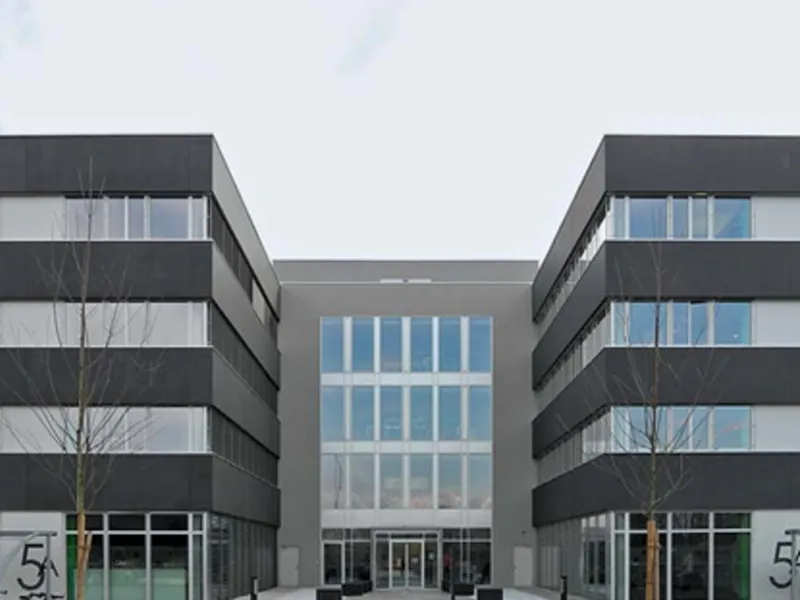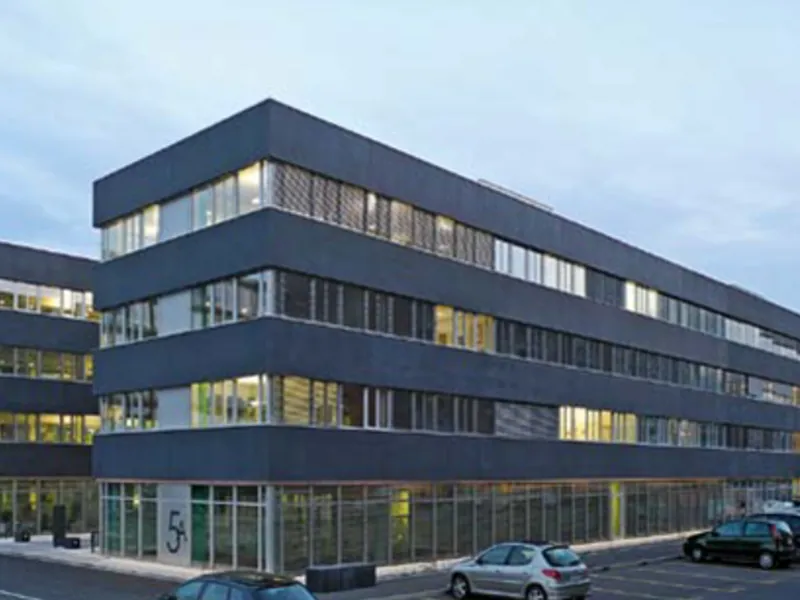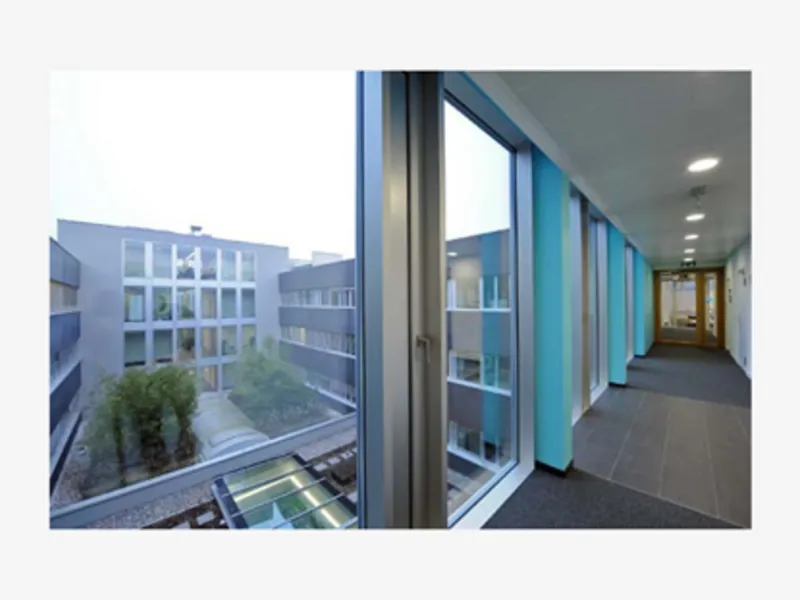Fase 2 av O2 Bygg
The O2 Building Extension project is located at the intersection of the communes of Onex and Lancy, along the Avenue des Grandes-Communes. It marks the second phase of an activity building initiative that began in 1995, with the first building constructed between 2006 and 2008. This extension aims to create a seamless architectural continuity with the preceding structure.
Bærekraftig bygning med CADIOM
The new extension utilizes a mix of concrete and glazed elements to maintain architectural coherence while enhancing insulation and glazing characteristics. The building consists of two parallel wings, oriented East-West, and connected by a central core, creating two courtyards. One courtyard is vegetated, while the other serves as an entrance area. The central core joins the two wings via glazed walkways, with one walkway expanding into a meeting area featuring a cafeteria and small meeting rooms on each floor. The load-bearing structure comprises reinforced concrete columns and slabs with triple-glazed facades. The project has reinforced insulation to meet near-Minergie energy standards, and the heating and cooling systems are connected to the CADIOM network, a remote heating system linked to the Cheneviers waste recovery plant.
Lys og materialvalg
Architecturally, the two wings of the building maintain a horizontal design pattern by using black prefabricated concrete, minimizing vertical divisions and creating a linear appearance. The central core employs a combination of glass and raw concrete. Lighting was a key focus, with natural light guided to main work and circulation areas, supplemented by zenithal daylight from the interior courtyards. This focus on daylighting influenced the design, keeping wings to a length of 12 meters. Inside, carpets, painted walls, and acoustic metal false ceilings are utilized, while office partitions are made of removable metal and glass, providing flexibility for tenants.
Avfallssite utgravingsutfordringer
The project faced several challenges, predominantly being situated on a former landfill. To avoid deep excavation into the landfill, Berliner walls were installed. Additionally, a degassing system was implemented to prevent methane gas infiltration during earthworks, addressing safety concerns linked to the site's former use.
Det er 3 selskaper koblet til dette prosjektet.
Lag en bruker eller logg inn for se navn, telefonnummer og e-post adresse til selskapene og kontaktpersonene (f.eks. prosjektleder hos entreprenørene).
For å se dette innholdet må du logge inn eller lage en bruker


 Byggherre
Byggherre Rådgivende ingeniør
Rådgivende ingeniør Entreprenør
Entreprenør

 BuildPilot
BuildPilot

 Arkitekt:
Arkitekt: 










